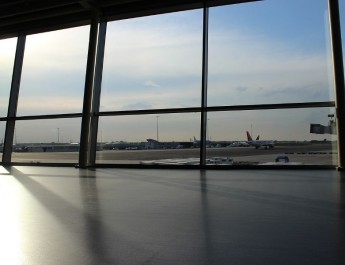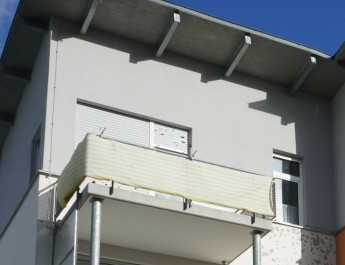Germany is one of the largest construction markets in Europe, experiencing significant growth in the number of newly constructed housing units in recent years. This growth in the housing sector has led to a corresponding increase in the demand for windows, which are an essential component of every residential building, serving both functional and aesthetic purposes. Windows provide access to natural light and fresh air while also protecting against external factors such as noise, wind, and cold.
In this extensive analysis, we will delve into the development of housing construction in Germany, with a particular focus on the capital city, Berlin. Additionally, we will explore the various types of windows in demand, their market shares, and the factors driving this demand. Furthermore, we will examine the prospects for the future development of the window market in Germany.
Housing Construction in Germany
Recent Trends
In recent years, Germany has witnessed a growing trend in the number of residential units being completed and made available for occupancy. In 2022, over 300,000 housing units were completed in Germany, representing a 6.5% increase compared to the previous year. Simultaneously, the value of investments in residential construction exceeded 100 billion euros in the same year.
This growth in housing construction is primarily driven by factors such as a rising demand for new housing, improved energy standards in construction, and advancements in window manufacturing technology.
Demand for Windows in Germany by Type
The demand for windows in Germany is divided among several types, with plastic windows being the most popular. In 2022, plastic windows accounted for 60% of the market. These windows are favored for their ease of maintenance, durability, and a wide range of available colors and designs. Following plastic windows, aluminum windows held a 25% market share due to their lightweight, durability, and corrosion resistance. Wooden windows constituted 15% of the market share, known for their elegance and ecological appeal, albeit at a higher price point.
Berlin: A Focus on Development
As the capital of Germany, Berlin is one of the fastest-growing cities in the country, experiencing significant growth in residential construction projects. In 2022, over 20,000 housing units were completed in Berlin, marking a 10% increase compared to the previous year.
The growth in the number of new housing units in Berlin directly translates into an increased demand for windows. In 2022, over 1.5 million window units were sold in the city. Plastic windows were the most popular in Berlin, comprising 65% of the market share, followed by aluminum windows at 25% and wooden windows at 10%.
Future Development Prospects
Projections indicate that the demand for windows in Germany will continue to grow in the coming years. According to an analysis by the German Association of Window and Facade Manufacturers (VFF), window sales in Germany are expected to reach 15.8 million units in 2023 and 16.1 million units in 2024. This sustained growth in demand for windows can be attributed to the following factors:
- Rising Demand for New Housing: The increasing need for new residential units, driven by demographic factors and urbanization, will continue to boost the demand for windows.
- Improvement in Energy Standards: Germany has stringent regulations regarding the thermal insulation properties of windows in new buildings. As energy efficiency becomes more critical in construction, there is a growing demand for energy-efficient windows that meet these standards.
- Advancements in Window Manufacturing Technology: Ongoing developments in window manufacturing technology lead to the production of more efficient and durable windows, attracting both builders and homeowners.
Additional Considerations
Apart from the data related to window demand, several other factors are noteworthy in the context of Germany’s housing construction and window market:
- Thermal Insulation Regulations: Germany has strict regulations concerning the thermal insulation of windows in buildings. New constructions must meet specified standards to reduce heat loss.
- Window Certification System: There is a certification system in place for windows in Germany, ensuring that they meet certain quality and safety requirements.
- Industry Associations: Germany has active industry associations that promote the development of the building hardware market, including windows.
Housing Construction in Germany in 2022-2023
Germany remains one of the largest construction markets globally. In 2021, the value of the German construction sector reached approximately 1.2 trillion euros, with 25% of that attributed to residential construction. Over the next few years, further growth is expected in this sector, driven by increasing real estate prices in the primary market and rising demand for rental properties.
The Impact of Housing Construction on the Environment
The development of housing construction has significant environmental implications. Residential buildings contribute to around 40% of Germany’s total energy consumption. Consequently, it is crucial for new residential buildings to be energy-efficient. Energy-efficient windows can play a vital role in reducing energy consumption in residential buildings, contributing to environmental conservation efforts.
The Outlook for Window Demand in the German Housing Sector
Plastic Windows
Plastic windows are the most popular type of windows in Germany. In 2022, they held a market share of 64%. These windows are appreciated for their durability, resistance to weather conditions, and low maintenance requirements. They are also relatively affordable, making them a preferred choice for many homeowners and builders.
Aluminum Windows
Aluminum windows are the second most popular type in Germany, with a market share of 25% in 2022. They are known for their modern aesthetics, high durability, resistance to corrosion, and minimal maintenance needs. These qualities make aluminum windows an attractive option, particularly for commercial and contemporary residential projects.
Wooden Windows
Wooden windows, while the most expensive among the three types, have a market share of 11% in 2022. They are valued for their natural aesthetics, excellent thermal insulation properties, and relatively easy maintenance. Wooden windows are often chosen for upscale residential projects and heritage buildings.
Berlin: A Growing Market
Berlin, as the capital and largest city of Germany, plays a crucial role in the country’s housing construction and window market. In 2022, approximately 24,000 new housing units were completed in Berlin, with 65% of them in multi-family housing and the remaining 35% in single-family housing.
The growth in housing construction in Berlin has led to an increased demand for windows. In 2022, 1.9 million window units were sold in the city. Similar to the national trend, plastic windows were the dominant choice, comprising 63% of the market share. Aluminum windows followed at 26%, and wooden windows accounted for 11% of the market.
Future Outlook for the Window Market in Germany
Forecasts for the German window market are optimistic. In 2023, it is expected that window sales in Germany will reach approximately 16.1 million units. In Berlin, the outlook is equally positive, with an estimated 26,000 new housing units expected to be completed in 2023. This growth in new housing units in the capital city will undoubtedly lead to an increased demand for windows. It is projected that 2.1 million window units will be sold in Berlin in 2023.
Conclusion
The development of housing construction in Germany, particularly in Berlin, has a significant impact on the demand for windows. As the housing sector continues to expand, driven by factors such as population growth, energy efficiency requirements, and advancements in window technology, the demand for windows is expected to remain on an upward trajectory in the coming years.
The construction sector in Germany not only supports economic growth but also has environmental implications, emphasizing the importance of energy-efficient building practices and materials such as windows.
In summary, the German housing construction and window market is experiencing positive growth trends, with continued expansion expected in the near future. This growth presents opportunities for both the construction industry and the window manufacturing sector as they work together to meet the evolving demands of homeowners and builders.



